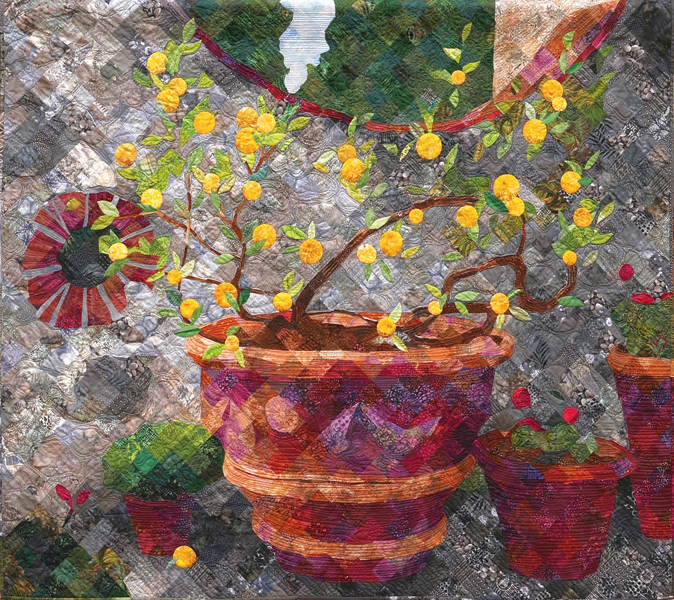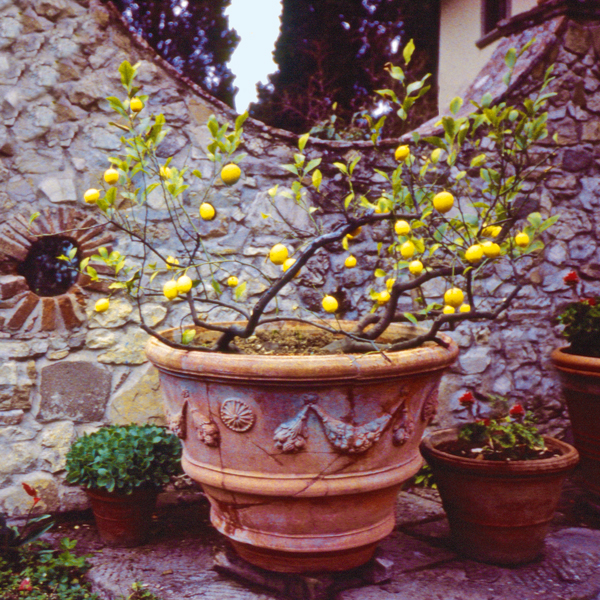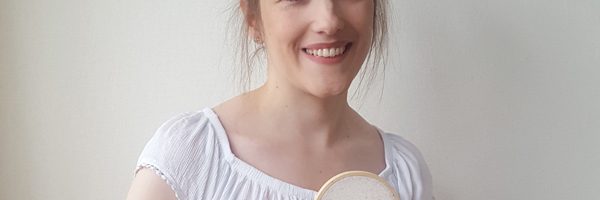
How did she do that? Lemon Tree in Tuscany
Sandra Bruce has been quilting since 1988 when she formed a group with her neighbor, Therese May (one of the first art quilters). Then in her 30s, she had been sewing clothes since she was eight.
This quilt is made using a technique Sandra developed called Material Matrix, inspired by the painter Chuck Close. Sandra lives in Grass Valley, California, in the Sierra Nevada foothills. Grass Valley is surrounded by cedar and pine trees and deciduous trees that burst with amazing autumnal (fall) colours, which Sandra can see from her studio windows.
This art quilt came from a photo I took on a trip in Italy. More than anything this photo brings me very happy memories of that journey when I was studying Italian in Florence. I did a day trip to a winery where I took this photo. It had been in the back of my mind for a long time to make some sort of art with the image, and although it is a very detailed kind of photo for my Matrix Technique, I decided to give it a go.

First, I take a photo and put a grid on it, each square being 2in. I print the photo out with the grid and using only my eye, I pick fabrics to represent what I see in the photo.
When a square has more than one object in it, piecing is required. Some squares have more than 10 pieces in one 2in square. I use prints, batiks, stripes, even polka dots — I love mixing commercial fabrics and hand-dyed fabrics.
There is a lot of serendipity in my quilts and they are ‘wonky’, which means not every seam in the piecing lines up exactly right. But when viewed from a distance the eye puts the image together.
I never know exactly how it’s going to look until I am finished, and this is what makes my technique exciting and rewarding to me. My favourite subjects are human faces, which are the most challenging, but I do also love to interpret other subjects, such as this lemon tree.
In this case I worked in a block of five squares across by five squares down — in other words a ‘25-patch’. I start at the top left and work systematically left to right, top to bottom, assembling the blocks on my design wall. When I am confident that everything looks good, I sew the blocks together. I worked on the diagonal in this quilt (as opposed to vertical/horizontal squares), which added a layer of challenge that I enjoyed.
Because it is impossible to get a perfect circle in my technique, I went about making this quilt in a different way than I usually do. I made the whole quilt without any lemons and only half of the leaves pieced in. So my tree was almost naked all the way to finish. Then I created by quilt sandwich using Quilters Dream cotton batting.
I quilted it on my Gammill long-arm machine in a free-motion ‘contour drawing’ kind of way, blocked it and added the matching binding. Only then did I hand-appliqué the lemons and the remaining leaves onto it. This makes the lemons and leaves pop a bit, giving it some dimension. I like matching binding because it brings the image all the way to the very edge and is fun to do.

I enjoy teaching my technique in shops and to guilds, and it is so gratifying to see students get excited about it and go on to make beautiful quilts on their own. It really teaches you how to ‘see’ in a different way, using colour and value to obtain a beautiful image.
For more about Sandra:
Email: sandrabruce@pacbell.net
Website: www.sandrabruce.com
Instagram: www.instagram.com/sbruce1955/


